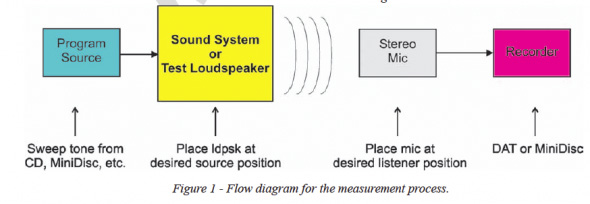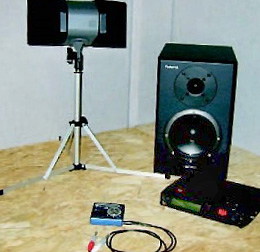It is difficult to describe how something sounds. The terms are vague and subjective, and often have different meanings to different people.
Sound is meant for listening, and the listening process is the most power diagnostic tool for the audio technician. Measurement systems yield lots of data, but it can be difficult to interpret.
It makes perfect sense to combine the hearing process with the measurement process, allowing the benefits of each to be exploited.
The processes of convolution and auralization allow measured data to be evaluated by listening. The method that I use requires the system impulse response (IR) to be saved as a .wav file. Wave files are the default file format for several measurement applications.
Others are able to export their data as wave files. I then post-process the IR in the SoundForge Acoustic Mirror module to listen to the data encoded on music or speech (www.sonicfoundry.com).
Of course, all of this requires a personal computer. This can be a hassle, as computers can be awkward and unwieldy when used to evaluate different listener locations. The setups can be time consuming, requiring very long cables, interface boxes, etc.
Ironically, the power of the personal computer can allow the system IR to be gathered without it. This article describes one method to gather the system IR without a PC, and how to post-process the data to evaluate it and listen to it.
The Impulse Response
The impulse response (IR) is without a doubt the single most important acoustical measurement. It is also one of the oldest, having been implemented by hand claps, balloon bursts, starter’s pistols and even yachting canon fire. Within it lies a wealth of information about the sound system and acoustic environment.
The principle is simple – whatever the room does to your hand clap, it will also do to your voice, or to a musical instrument played at that location in the space. The IR is the “signature” that the room places on the sound. Once the IR is gathered at a listener position, it can be analyzed to reveal information about the early and late reflected fields, and the diffuse field of the room.
If the sound system is used to excite the room, the IR will also contain information about the loudspeaker’s response and resultant performance as it relates to speech intelligibility and music clarity. In short, most system/room characteristics that can be heard at a listener position will be included in the IR for that position.

Many wave editors (SoundForge, Cool Edit) have the ability to convolve two files.















